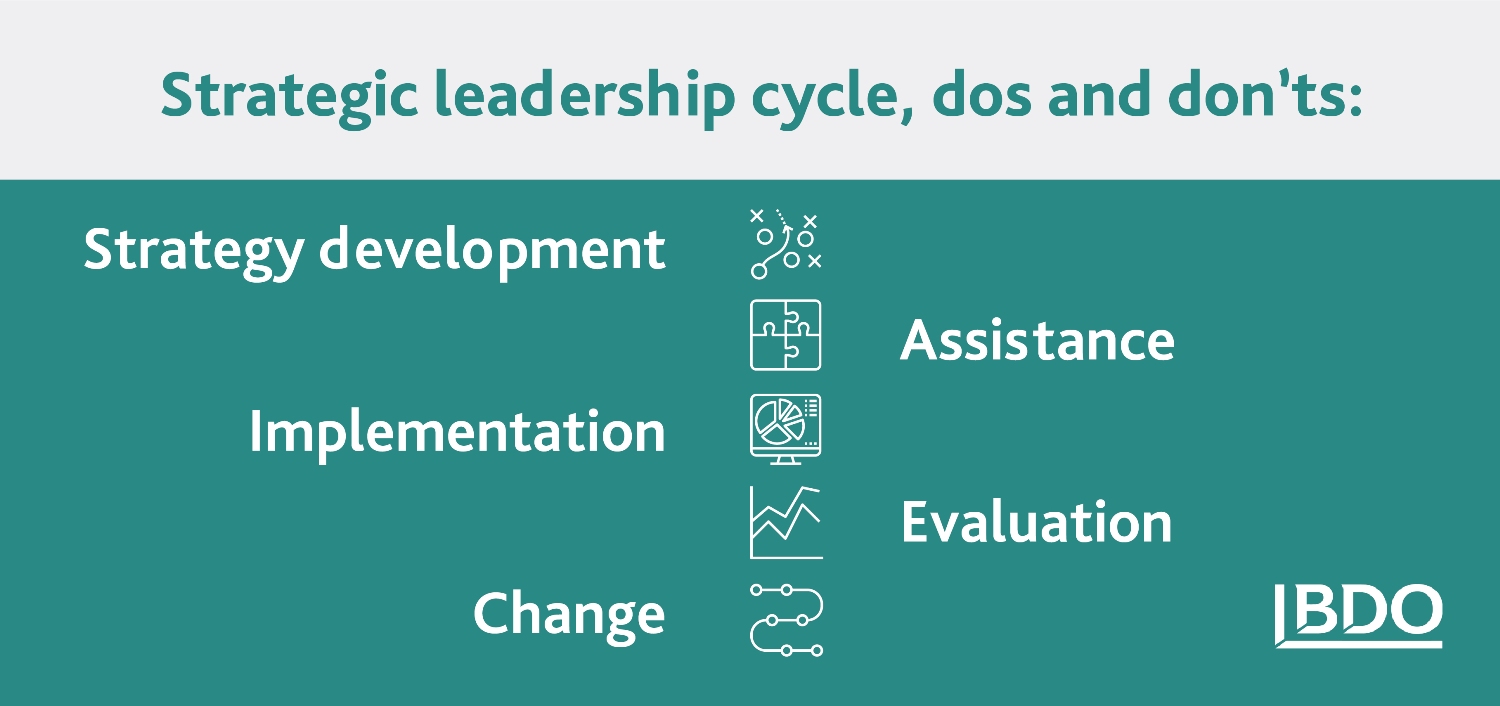Strategic leadership: qualities distinguishing best managers
Strategic leadership: qualities distinguishing best managers
During the webinar, Nataliia spoke about the subtleties of strategic leadership and what the strategic structure looks like in action.
Above all, it is necessary to define and understand the goal of strategic leadership, as it can help implement the requirements and goals of using this style. The strategy is to compile a set of steps and processes that can help achieve a predetermined goal. To have a strategy, it is necessary to identify an understanding of the situation and goals set first. Once the action plan has been shaped, one must implement it in accordance with the established guidelines.
Goal of strategic leadership
It is important to understand that strategic leadership is not just an instrument for organizing a group or managing an entity’s operational aspect. The goal of the strategy is to change or create an organizational structure that is better suited to achieve an organization’s goals. Therefore, the goal of strategic leadership always incorporates aspects of the transformation.
While strategic leadership helps increase an entity’s productivity and can help solve structural problems within an organization, the transformation can be driven by a positive need rather than simply finding ways to survive. However, increasing productivity often underpins strategic leadership. In a typical strategic leadership structure, these changes are supported by people development rather than reductions in the operating structure.
In order to solve problems and move forward, it is necessary to interpret the world having a fresh look and vision. It is easy to think that most leaders will follow a strategy, but very often the idea of a strategic leadership structure is misunderstood as simply a plan of action. Leadership style is much more than just an idea of how to implement certain policies or processes.
Types of leadership:
- Management leadership. It is about stability, order and focus on day-to-day activities.
- Strategic leadership. The ability to influence others so that they voluntarily make daily decisions that enhance an organization’s long-term viability, while maintaining ongoing results.
- Visionary leadership. Future-oriented and risk-taking; influence through socialization and shared norms, values, faith (by the way, such leaders do not depend on their organizations in who they are).
What are the elements of a strategic leadership cycle?

- Strategy development is identifying an organization’s understanding of its context and capabilities. A strategic leader “helps” an organization see evolving environments, creates policies, frameworks, and the coordinate system in which others can operate.
- Assistance implies ensuring an organization’s viability, strengthening resources, developing of human and social capital, and implementing specific plans.
- Implementation of the strategy includes consistency of programs and resources, strategic control.
- Strategy evaluation contains anticipatory reporting, provides interpretation of the significance of events in terms of strategic configuration and comparison, analysis of ideas, reflection on disputes, review of once deleted ideas, extensive dialogues.
- Final stage: strategy change — normal expectations, rather than admission of failures or incompetence.
Ms. Kryvda noted that strategic leaders are studying the current market in search of growth opportunities. Once they determine where the company needs to move, they set goals to position the company to achieve that growth. While most businesses have at least some goals to achieve, a strategic leader will consistently set new goals and new benchmarks for the company to take the right approach for the future.
To sum up the webinar, we would like to say that effective strategic leaders are strong communicators, active listeners, passionate, positive, innovative, diplomatic and responsive people. By realizing these qualities, you can already become a better leader and can help your team succeed!
And the last thing to factor in is that strategic leadership differs. The way leadership is shown depends on the organization’s culture and the existing framework, as well as on individual skills. For example, effective communication channels will be very different for a team manager working on site on a daily basis and for a remote manager who appears in the office from time to time. Adapt your strategic leadership style to your position, your company and your work situation